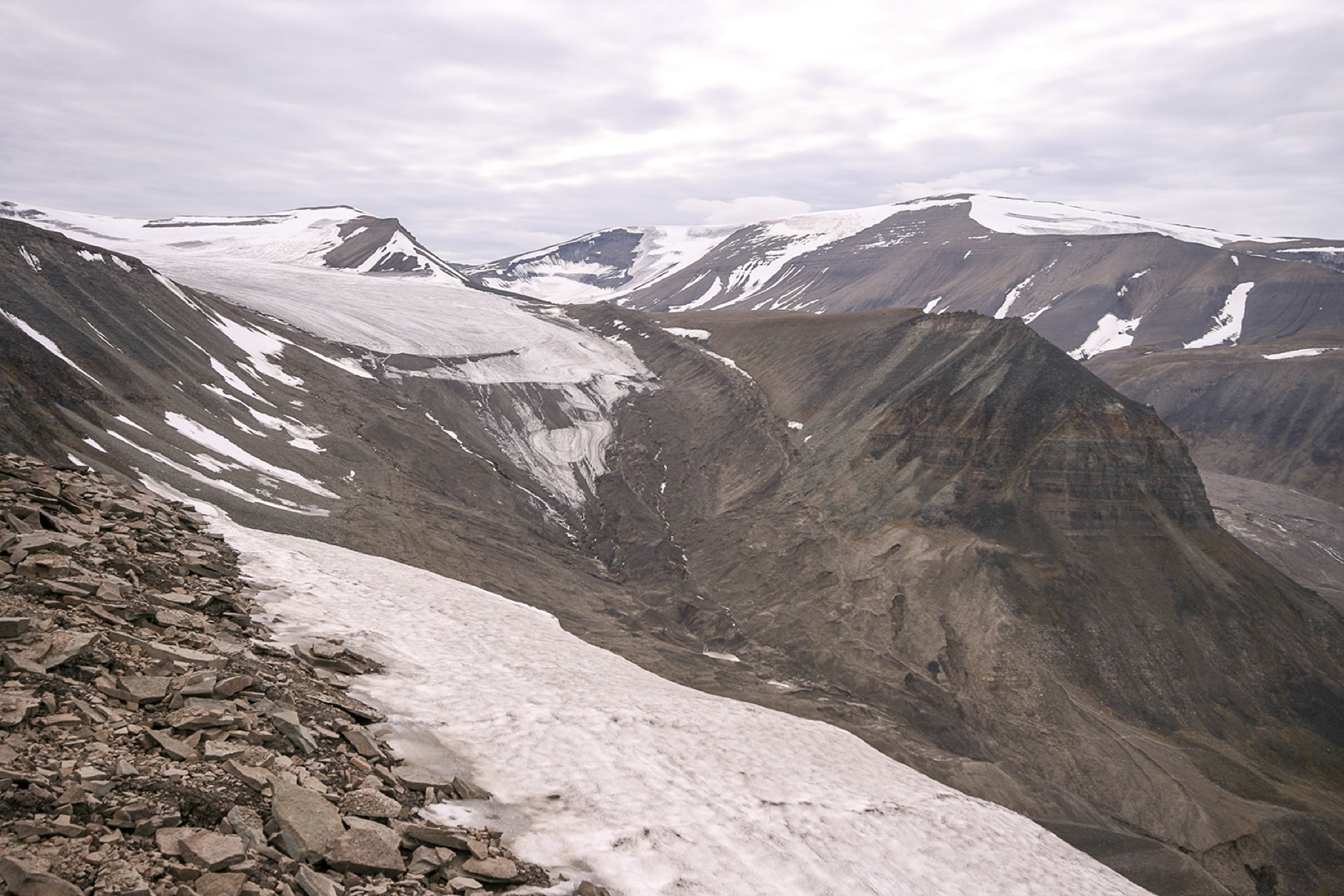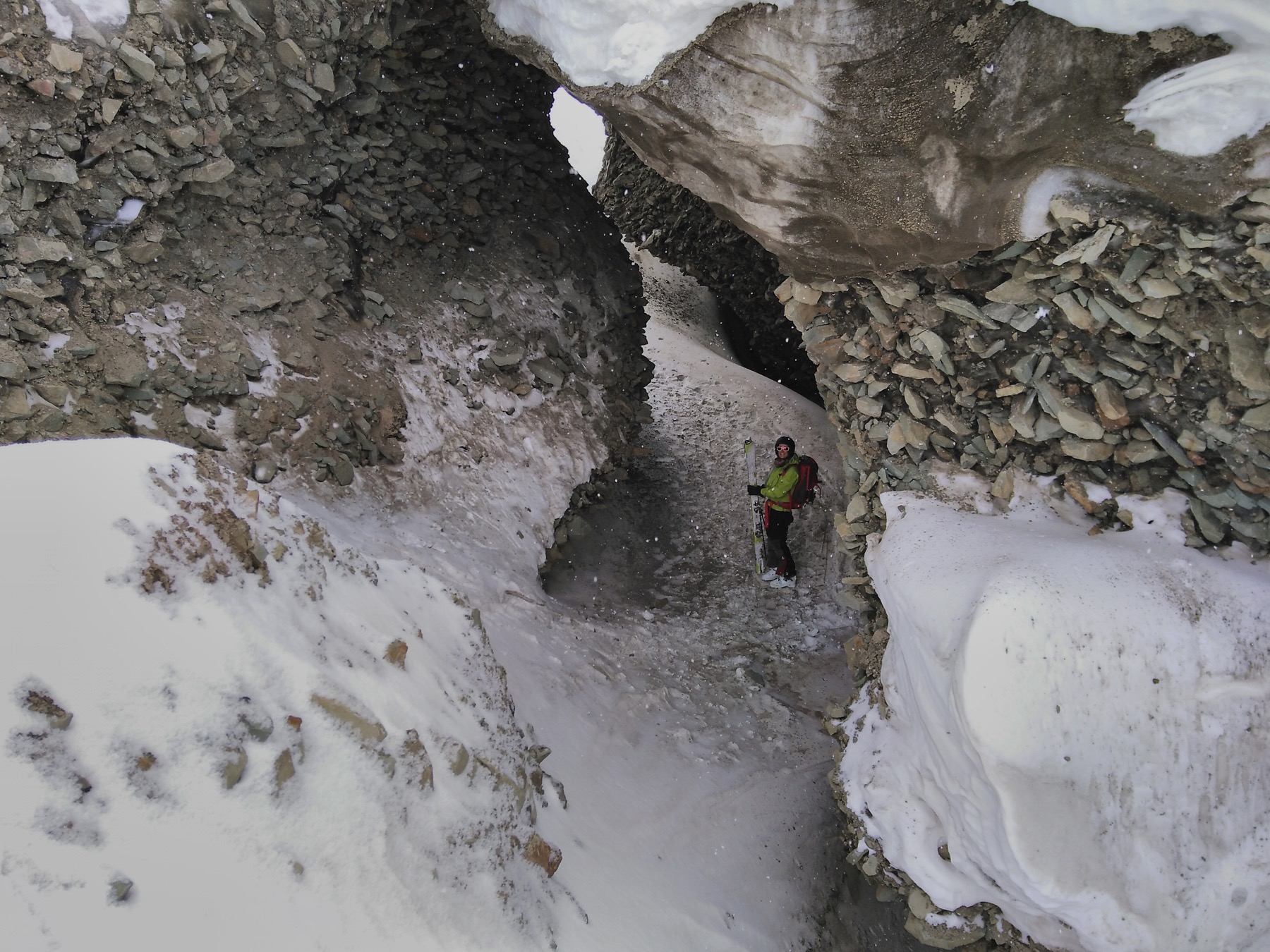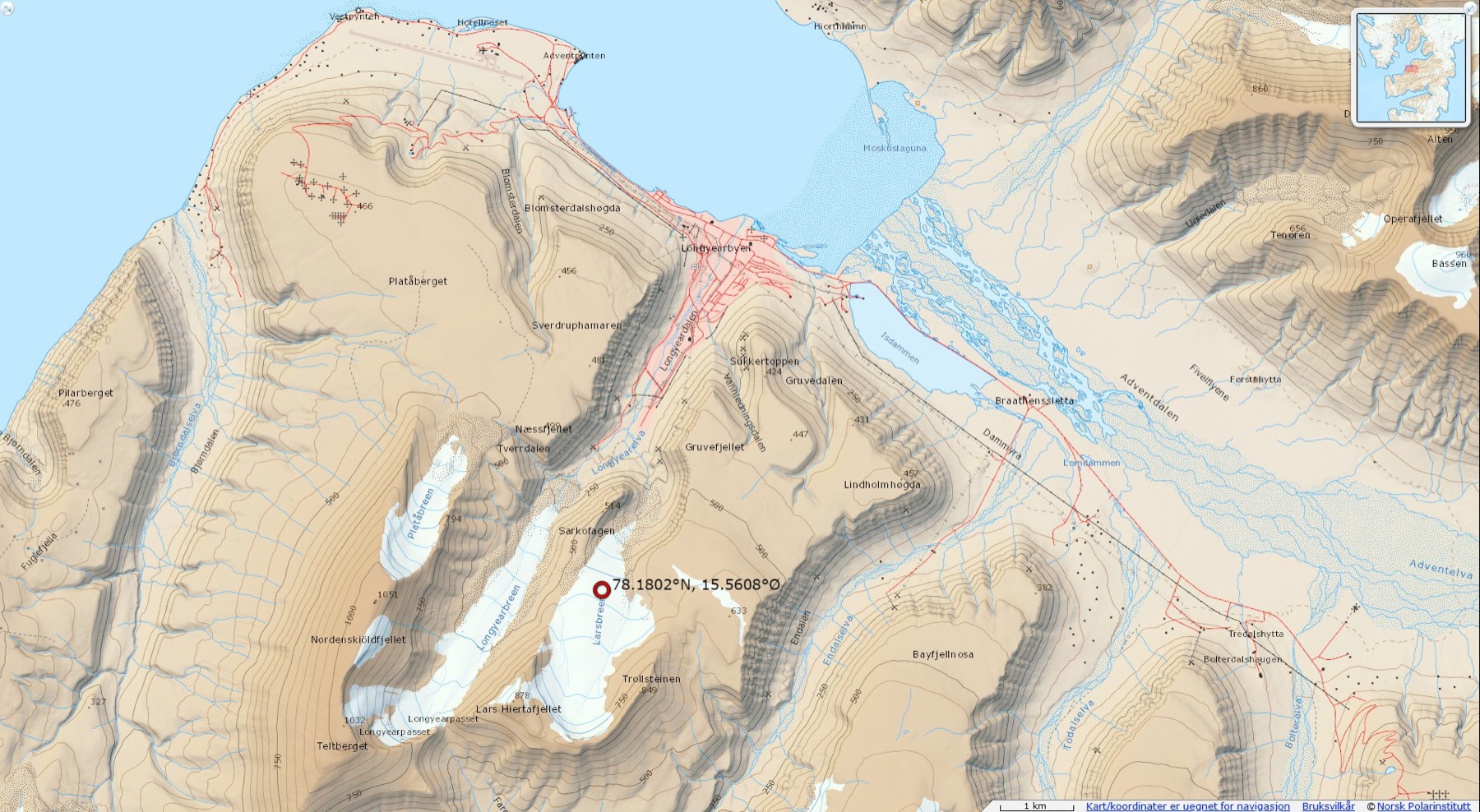Within Spitsbergen, the surroundings of Longyearbyen enjoy a rather dry and relatively mild climate and show therefore only moderate degree of glaciation. Only 18 % of the land area is here covered by glaciers. Most of the glaciers are relatively small, isolated valley glaciers. Glaciers move by different mechanisms: The ice mass can slide downslopes as a whole block. This works only if the glacier is „warm“, which means that the temperature is at the pressure melting point near 0°C. Then, there is a thin water layer between the ice and the underlying bedrock, which can serve as a lubricant. This mechanism of movement, called basal gliding, is quite efficient and can result in velocities of several hundred metres per year or, in certain cases, even more. Huge ice masses sliding across a rock surface can cause strong erosion. An important reason for the glacier ice to be „warm“ (or temperate) is the summer meltwater that percolates into the snow cover that remains on the glacier in its higher parts. Not being able to run off, the meltwater penetrates into the ice body to re-freeze near the bottom, emitting melting heat and thus warming up the surrounding ice. Larsbreen is mostly frozen to the ground. The temperature of cold such glaciers is below the pressure melting point. Cold glaciers are frozen solid to the underlying ground and can only move by means of internal deformation under the influence of gravity. This kind of movement is much slower than basal gliding and results in velocities of only a few metres per year. Internal deformation does not cause any erosion: Cold glaciers can even preserve pre-glacial landscapes. The glaciers near Longyearbyen are relatively small and thin and accordingly cooled down below the pressure melting point by the severe winter temperatures. Larsbreen has suffered a lot of melting during the last decade.
The Longyearbyen Field Guide
We are a group of scientists and Svalbardians who want to share our knowledge about the vicinity of Longyearbyen with you. This app is non-commercial and meant for locals, guides, tourists and everyone interested in science.
It is initially based on the book “The Geology of Longyearbyen” and supported by the Svalbard environmental protection fund, The University Centre in Svalbard, Store Norske Spitsbergen Kulkompani and HDpublish.
We appreciate all of the voluntary contributions and support from all authors and initiators for making this app possible.



